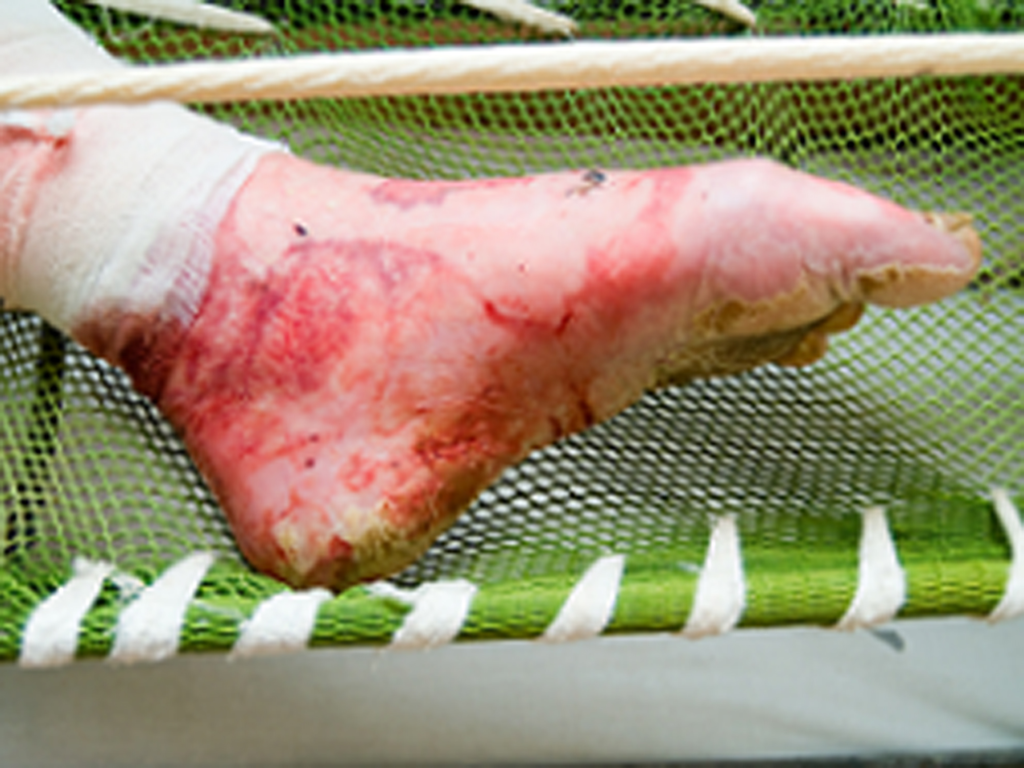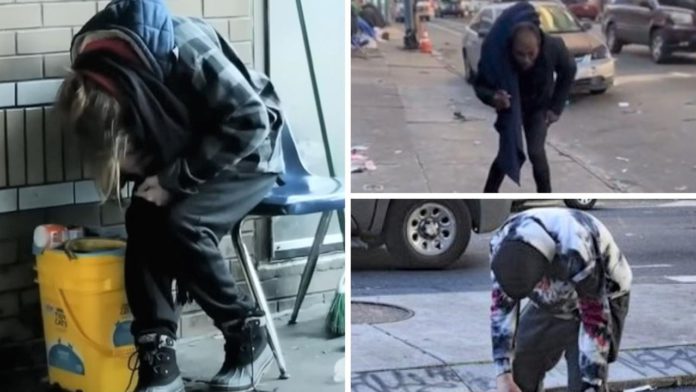Los Angeles officials are trying to stop the spread of the flesh-eating drug xylazine that has taken over the city.
The ‘zombie drug’, a veterinary tranquilizer approved in the US for cows and horses, is now flooding the illicit US drug market, with dealers often cutting it with cocaine and heroin.
But it is most often used to cut fentanyl, the lethally potent synthetic opioid that already kills tens of thousands of Americans every year.
The drug has spread to Los Angeles of late, with news crews capturing people hunched over and on the ground, strung out on the drug.
The problem, Los Angeles County Sheriff’s officials say, is that the drug is technically a legal substance.
The county is now desperately trying to track xylazine’s presence throughout the city, according to KTLA.

The DEA and the county’s health department have both issued urgent warnings against the use of the drug.
‘When combined with opioids like fentanyl, as is frequently the case, xylazine enhances the life-threatening effect of respiratory depression (slowing or stopping breathing) caused by opioids, increasing the risk of overdose and death,’ county officials said.
Tracking the drug, officials say, will allow them to get a sense of just how bad the problem is and the best practices to cut it out.
Nurses have described the wounds caused by xylazine as appearing as though something is ‘eating away your flesh from the inside out’.

Various liberal politicians and city leaders have attempted to implement numerous policies to curb the many issues that have arisen due to the swelling homeless and drug-addicted population.
One specific harm reduction policy that failed was the opening of the Tenderloin Center in San Francisco last year – a facility that was meant to help alleviate the city’s drug and homelessness crisis.
It cost taxpayers a whopping $22million and was meant to be a ‘safe place’ for addicts to ‘get high without getting robbed’ and without fear of fatally overdosing.
Users were also meant to be directed to help centers, though during its first four months of operations, it referred just 18 people of the more than 23,000 who were welcomed to the site.


